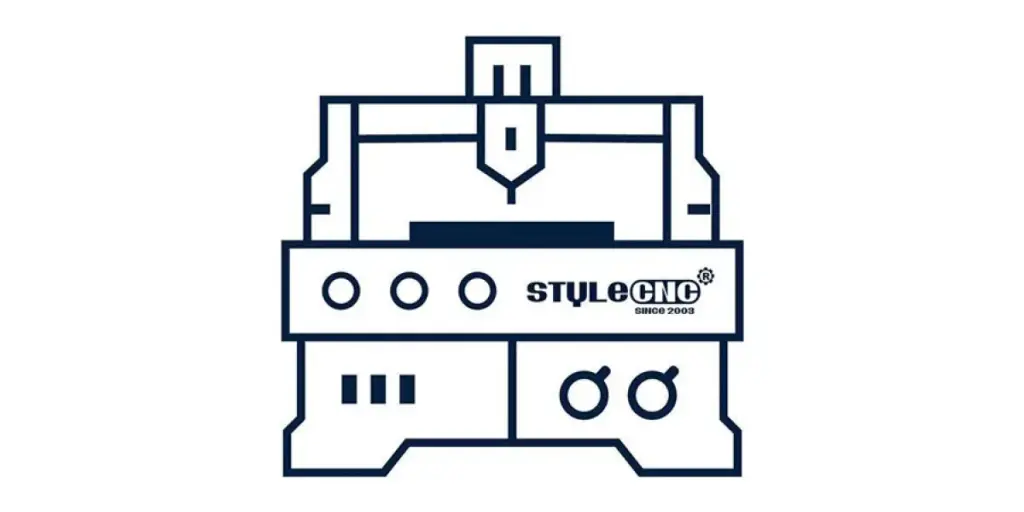In this article, we will discuss the basic things to consider with CNC routers for beginners. This will include the definition of parts, tools, accessories, software, CNC programming, as well as the setup, installation, and operation of CNC routers, as well as anything pertaining to the machines themselves.
A CNC router is a machine kit, which can be controlled via a computer numerical control. CNC routers are commonly employed for all kinds of different cutting purposes and can be used on various hard materials such as wood, composites, aluminum, steel, plastics, and foams. As one of the many kinds of tool that has a computer numerically controlled (CNC) variant, CNC routers are very similar in concept to CNC milling machines.
CNC routers come in many configurations and sizes, from small home-style “desktop” CNC routers to large “gantry” CNC routers used in industrial settings, such as boat-making facilities. Despite there being many different configurations available, there are certain specific components that apply to almost all CNC routers. These will usually comprise of such parts as; a dedicated CNC controller, one or more spindle motors, multiple AC inverters, and a working surface/table.
As a general rule, CNC routers are available in 3-axis and 5-axis CNC formats.
CNC routers are usually operated via a computer, or some other, similar form of smart device, with coordinates being uploaded onto the machine controller from a separate program. CNC router owners often have two software applications – one to make designs (CAD) and another to translate those designs into a set of instructions that can be functionally read by the machine (CAM).
Just as with CNC milling machines, CNC routers can be controlled directly using manual programming. However, the CAD/CAM system lends itself to wider possibilities for contouring, which is defined as creating a fine finish on an uneven or largely irregular surface. This speeds up the programming process and, in some cases, helps to create programs whose manual programming would be commercially impractical, if not altogether impossible.
CNC routers can be very useful when carrying out identical, repetitive jobs. This is because they typically produce consistent and high-quality work, which improves factory productivity. In fact, using a CNC router can reduce waste, frequency of errors, and thus the amount of time a finished product can take to find its way to market.
CNC routers tend to lend extra flexibility to most manufacturing processes. They can be used in the production of many different items, such as door carvings, interior and exterior decorations, wood panels, sign boards, and wooden frames and moldings. In addition, they can be used on musical instruments, furniture, several forms of appliance, and so on.
Another useful aspect of the CNC router is that it makes the thermo-formation of most plastics much easier, by automating – and thus streamlining – the trimming process. CNC routers ensure that parts produced in industrial settings are easily and accurately replicable, which helps to keep factory output at optimal efficiency.
Download the full article to learn more about how to CNC Routers.
Table Of Contents
Introduction to Numerical Controls
What is “Numerical Control”?
What are the advantages of using numerical control?
Setup time reduction
Lead time reduction
Accuracy and repeatability
Contouring of complex shapes
Simplified tooling and work holding
Cutting time and productivity increase
The differences: NC and CNC technology
The must knows: CNC terminology
Absolute zero
Axis
Ball screw
CAD
CAM
CNC
Controller
Daylight
Drill banks
Feed speed
Fixture offset
G-code
Home
Linear and circular interpolation
Machine home
Nesting
Offset
Piggyback tools
Post processor
Program zero
Rack and pinion
Spindle
Spoilboard
Tool loading
Tool speed
Tooling
High speed steel (HSS) tooling
Carbide tooling
Diamond tooling
Tool geometry
Shank
Cut diameter
Length of cut
Flutes
Tool profile
Chip load
Who are the personnel needed for CNC?
CNC Programmer
CNC Machine Operator
What accessories are needed for CNC?
Label printing
Optical readers
Probes
Tool length sensor
Laser projectors
Vinyl cutter
Coolant dispenser
Engraver
Rotating axis
Floating cutter head
Plasma cutter
Aggregate tools
Conventional and CNC Machining explained
Types of CNC machine tools
Mills and machining centers
Lathes and turning centers
How to offset and justify the cost of CNC machine operations?
Light duty
Medium duty
Industrial strength
Shipping
Installation and training
Safety related to CNC work
Source from Stylecnc
Disclaimer: The information set forth above is provided by Stylecnc independently of Alibaba.com. Alibaba.com makes no representation and warranties as to the quality and reliability of the seller and products.




